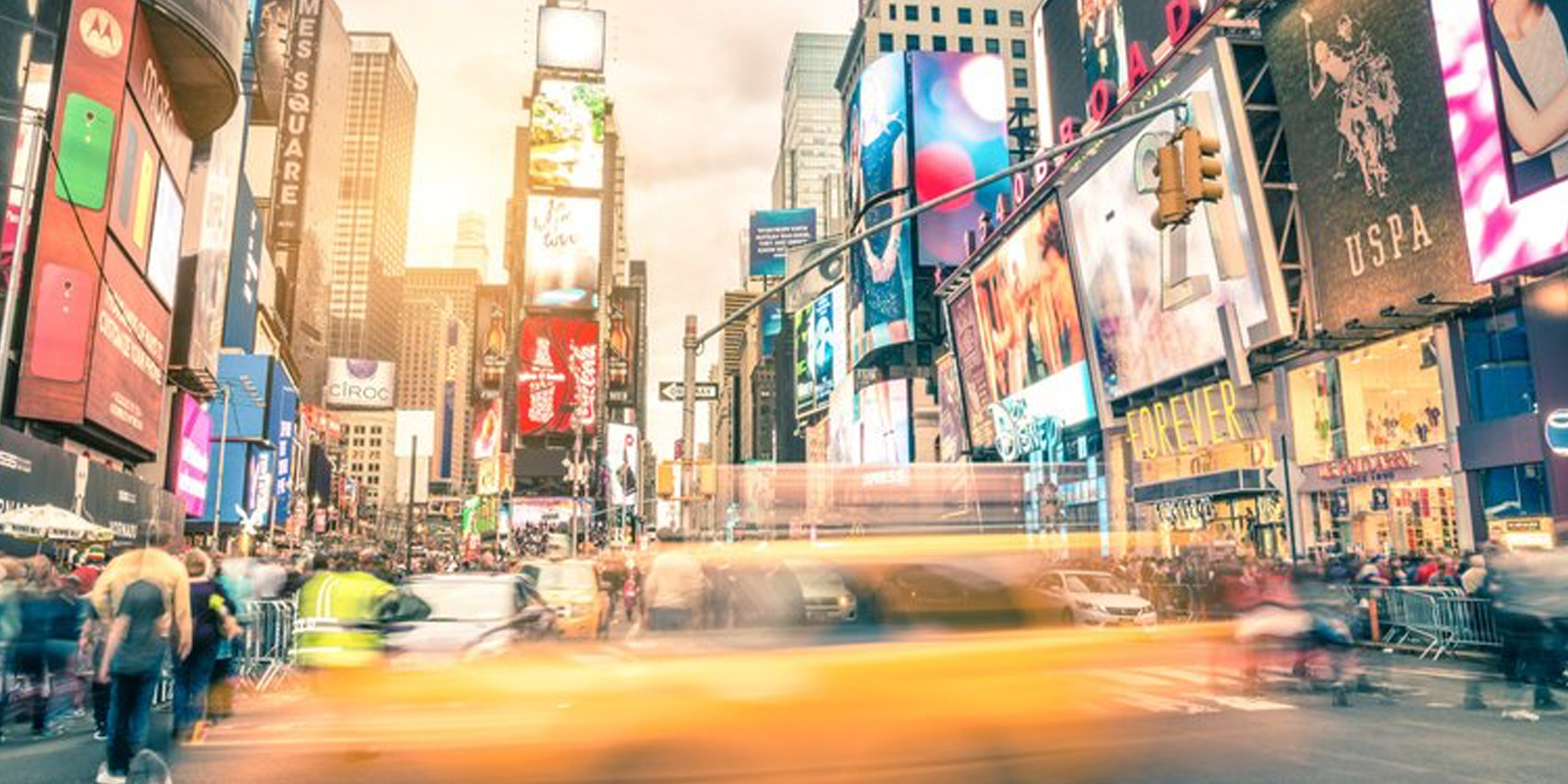
Mike Casper, CEO at Azumo, hopes the industry adopts frontlit LCD instead of making ever-brighter displays to “fight the sun.” He joined Digital Signage Today to explain how the new technology can cut energy use by 90%, and how it’s poised to disrupt outdoor digital signage.
A:While it’s challenging to calculate exact historic cost or energy usage, when you consider that a digital billboard uses up to 30 times more energy per year than the average American home, you can start to see how much ultrabright displays cost and consume.
The natural instinct is to try to “beat the sun at its own game” with brighter and brighter displays that end up consuming more and more energy. But it’s an impossible battle (the sun will always be brighter!), so it’s better to work with it than against it.
Q: How does front-lit LCD work, and how does the display quality and cost compare to other display options like traditional LCD?
A:Front-lit LCDs (in Azumo’s case, “LCD 2.0”) replace rear polarizers with mirrors at the back of the pixels, which enables them to use the ambient light around them and reduces dependence on the power-hungry backlight. Front-lit LCD displays still deliver video and high def colors, but with fewer LEDs — which makes it more cost-effective, especially compared to mini LED displays (which often have millions of LEDs).
Q: What does front-lit technology do for LCD product design? Is it more compact?
A: Yes, Azumo front lights use a 0.05mm thick optical film and require less volume compared to backlights. They also have lower power requirements (which enables smaller batteries), ultimately leading to thinner display stacks.
Q:How do front-lit LCDs stack up to other reflective solutions like digital paper?
A:Digital or electronic paper is great for applications that don’t require video or many colors, but their lack of speed and responsiveness and inability to work in cold environments can be major drawbacks for other applications. It’s also reflective-only — meaning it requires a front lighting solution to be used in dark environments. As a high-resolution display with a quick refresh rate and consistent contrast, Azumo’s LCD 2.0 works indoors, outdoors, and in all lighting conditions.
Q:More broadly, what are the merits of LCD vs. LEDs or OLEDs generally?
A: LCDs offer a high-resolution video option, along with a well-established supply chain and numerous vendor options. But they don’t always match sky-high user expectations (thanks to smartphones), and they usually have limited viewing angles, uneven backlighting and diminished clarity from ambient lighting.
OLEDs deliver good contrast and rich colors, especially in indoor or dark environments, but they can suffer from durability and sourcing issues. They’re also challenging to read in outdoor environments and prone to “burning” or “ghosting,” in which displays become discolored by always-on content.
Q: In real numbers, just how much energy and money does this technology save?
A: In outdoor environments, (our frontlit display) can help reduce energy consumption by up to 90% compared to traditional backlights.
Q:Does this tech use anti-reflective coating? Why is AR coating not more widely used? What about those adhesive AR shields we see online, is that the easy fix?
A:We don’t need to use anti-reflective coating. AR coating is great for decreasing glare in all types of light, but it doesn’t allow for the energy savings that front-lit LCDs can provide. (For example, ours) is visible in all lighting conditions, but it’s also very low-power and therefore more energy-efficient than a display that only uses AR coating.
Q:How well is the industry doing with sustainability, how far is left to go, and how can we get there? Must we sacrifice performance/aesthetics to get there?
A: The industry itself is a mark of sustainability, and I think it continues to get better. It takes fewer resources to update digital displays than to reprint and replace traditional signage. Further, modern advancements in display technology means the screens of today (regardless of type) are more energy-efficient than older models.
That said, there’s always room to make display technology lighter (less burdensome to transport at scale), durable (so they don’t have to be replaced frequently) and more energy-efficient.
Our work has shown we don’t need to consume even more resources to get there: the displays of the future can go more places, last longer, do more and fit where they previously couldn’t.
Q:For those who care less about ESG issues and more about the financial bottom line — what’s the case for choosing sustainable options like front-lit LCD?
A:Our manufacturing process uses existing LCD production equipment, which makes it cost effective on its own — and that’s before factoring in the savings associated with reduced energy costs. Longer lifespans, increased visibility in all lighting conditions and reduced eye strain make adopting front-lit LCDs a smart choice, outside of ESG benefits.
Q: This is kind of a two-part question, but where do you see this tech, and digital signage, evolving in the next few years?
A:Over the next few years, digital signage will get smarter and better integrated into our daily activities. Huge, power-hungry billboards will become relics of the past, and smaller, more agile displays will deliver relevant messages as part of our day-to-day lives.
At Azumo, we’ll continue to work on behalf of our customers to make displays that are thinner, more energy-efficient and safer to view.
Q: Thanks for sharing your valuable time. Is there anything we missed, or do you have any closing thoughts for our readers?
A:Sustainability can be a tough topic to conceive of broadly, but incremental improvements go a long way. By evaluating our display choices, we can ensure our messages are received safely, consistently and in an energy-efficient way.
(2022, December 9). Digital Signage Today. Retrieved from https://www.digitalsignagetoday.com/articles/how-frontlit-lcd-slashes-costs-energy-use/
